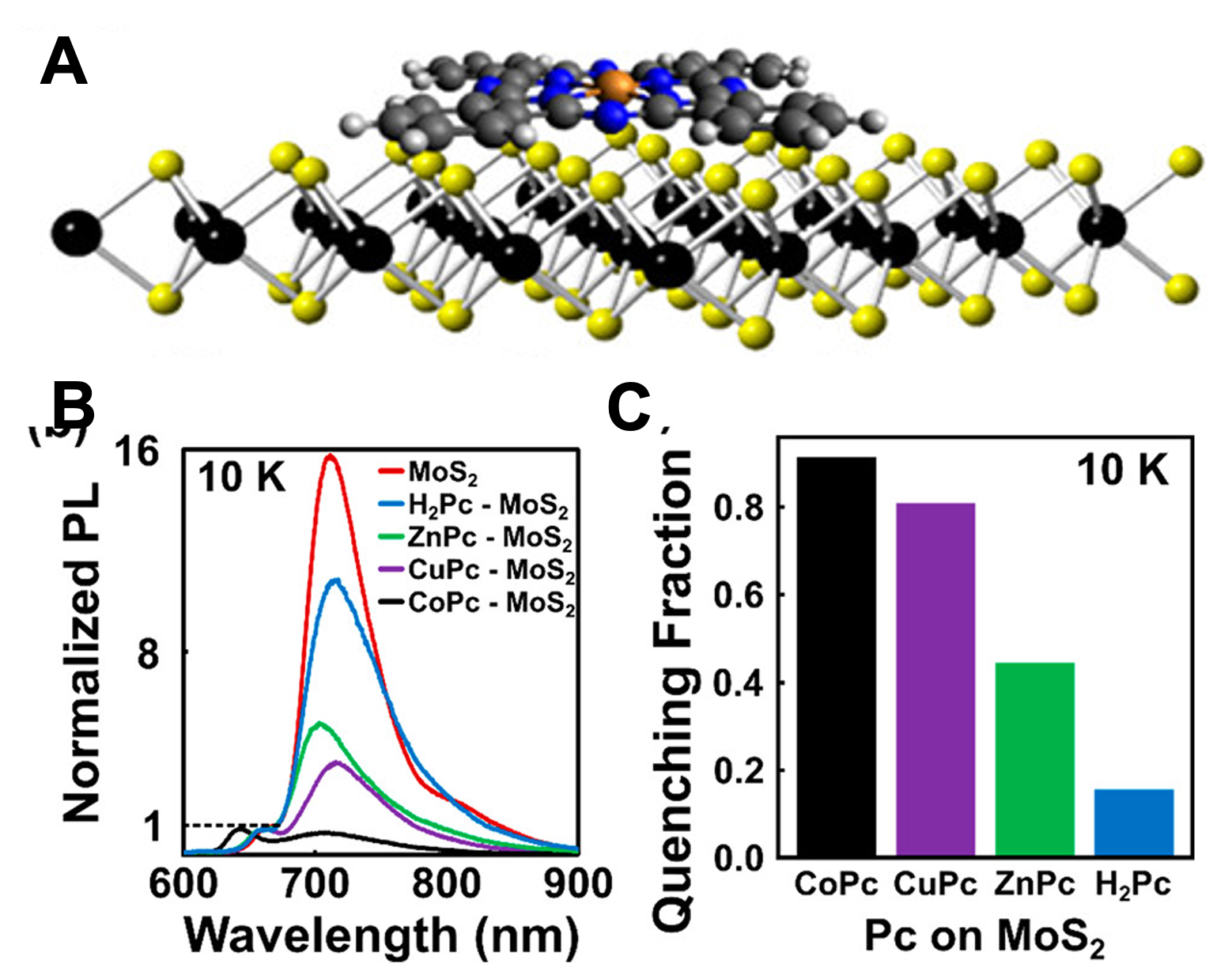 Lattice defects play an important role in determining the optical and electrical properties of monolayer semiconductors such as MoS2. Although the structures of various defects in monolayer MoS2 are well studied, little is known about the properties of the fluorescent defect species and their interaction with molecular adsorbates. In a 6 PI collaboration within NU-MRSEC IRG-1, low-temperature defect photoluminescence in MoS2 was investigated following the deposition of phthalocyanine molecules to form 0D-2D mixed-dimensional heterostructures. Photoluminescence quenching was found to significantly depend on the identity of the phthalocyanine metal in agreement with density functional theory modeling. These results demonstrate that defect-based excited-state decay pathways can be controlled by molecular adlayers, which has broad implications for the design of mixed-dimensional optoelectronic devices.
Lattice defects play an important role in determining the optical and electrical properties of monolayer semiconductors such as MoS2. Although the structures of various defects in monolayer MoS2 are well studied, little is known about the properties of the fluorescent defect species and their interaction with molecular adsorbates. In a 6 PI collaboration within NU-MRSEC IRG-1, low-temperature defect photoluminescence in MoS2 was investigated following the deposition of phthalocyanine molecules to form 0D-2D mixed-dimensional heterostructures. Photoluminescence quenching was found to significantly depend on the identity of the phthalocyanine metal in agreement with density functional theory modeling. These results demonstrate that defect-based excited-state decay pathways can be controlled by molecular adlayers, which has broad implications for the design of mixed-dimensional optoelectronic devices.